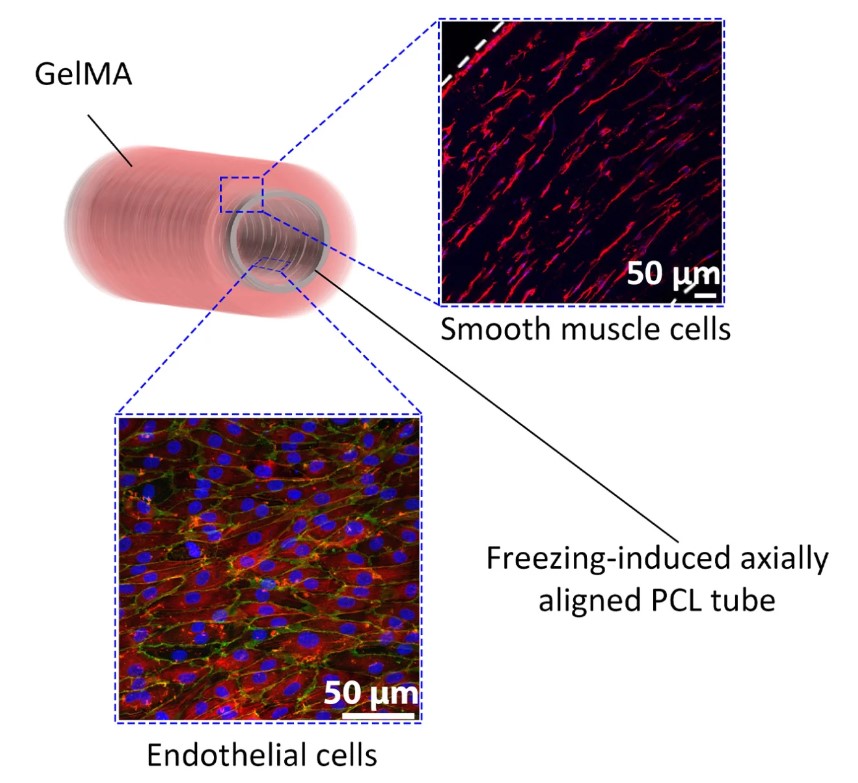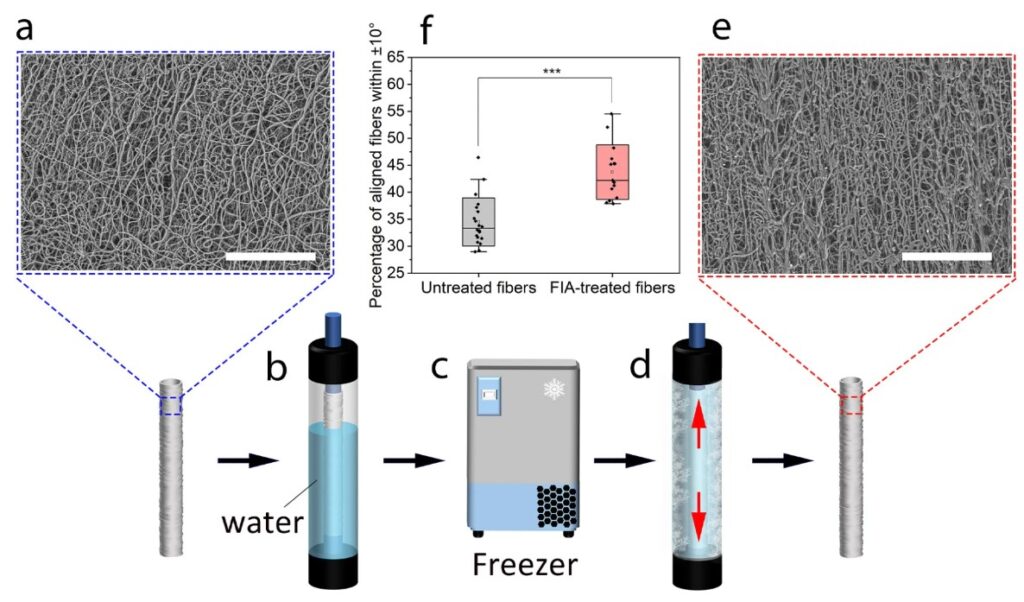From University of Melbourne 08/08/23

University of Melbourne researchers have developed a fast, inexpensive and scalable method for engineering blood vessels from natural tissue.
Co-led by ARC Future Fellow Associate Professor Daniel Heath and Redmond Barry Distinguished Professor and Shanahan Chair in Frontier Medical Solutions Andrea O’Connor, both from the Department of Biomedical Engineering, the researchers employed a novel approach to ‘tissue engineering’ blood vessels.
By combining multiple materials and fabrication technologies, they developed a method to create blood vessels with complex geometries like native blood vessels.
The research was published in the journal ACS Applied Materials and Interfaces on 13 July.
University of Melbourne’s Dr Tao Huang and PhD candidates Mathew Mail and Hazem Alkazemi, and Associate Professor Zerina Tomkins from Monash University were also in the research team.

Blood vessels serve an important function in sustaining life, by carrying oxygen-rich blood and essential nutrients to all parts of the body while removing toxic products.
Illness and dysfunction in blood vessels, on the other hand, can result in life-threatening disorders such as heart attacks, strokes and aneurysms, making cardiovascular disease the number one killer globally.
Associate Professor Heath said researchers around the world have been trying to perfect blood vessel tissue engineering for many years.
“Current methods are slow, require specialised and expensive equipment like bioreactors, and are low throughput – meaning it’s difficult to provide the needed supply of engineered vessels,” Associate Professor Heath said.

“By combining multiple materials and fabrication technologies, our method brings us closer to a future where engineered blood vessels will become a transformative solution for cardiovascular disease, especially for those patients who lack suitable donor vessels.”
While bypass surgery has proved a life-saving alternative for replacing severely damaged blood vessels, it has limitations, particularly for smaller diameter blood channels such as the coronary artery.
Non-living synthetic grafts can cause blood clotting and obstruction, making them unsuitable in some circumstances.
As a result, patients who have limited options due to past surgery or comorbidities such as diabetes face significant problems.
To overcome these limitations, the researchers investigated developing ’tissue-engineered’ blood vessels, which are made from human cells and tissues.
These created vessels have the potential to treat cardiovascular illness, as well as construct built-in blood supply for larger tissue creations.
Professor O’Connor said the research is an exciting step in scientists’ ability to engineer human blood vessels.
“We are now able to rapidly and cheaply manufacture blood vessels using living tissue that has appropriate mechanical properties and mimics the cellular orientation of the inner-most layer of blood vessels,” Professor O’Connor said.
“While the engineered blood vessels are not yet ready for bypass surgery, the findings mark a significant advancement in the field of tissue engineering.”



